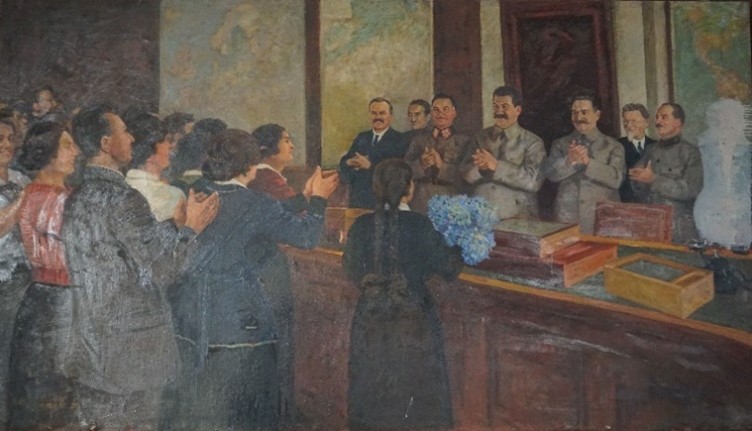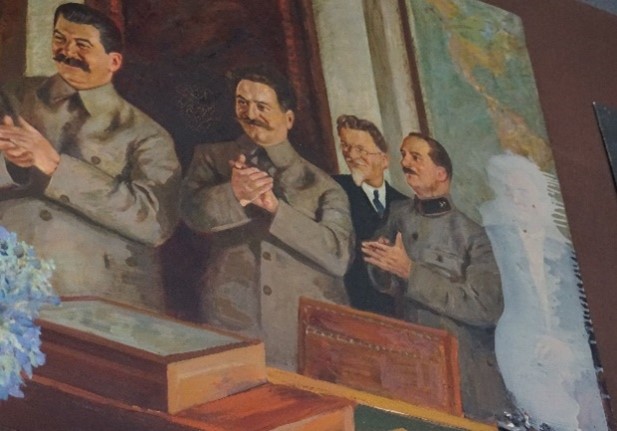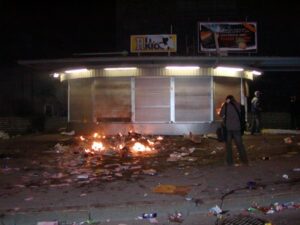Because of the spread of the internet, and social media in particular, many phenomena known for centuries have acquired a new dimension. This is also true for disinformation and the dissemination of fake news. It must be remembered, however, that disputes about the past are natural and need not be related to the use of such manipulation techniques.
Although no one called them disinformation and fake news until recently, they have been used in politics for centuries. Rumours were disseminated with the intention to discredit competitors in the fight for power; false information was employed to disorientate the enemy at times of war or provoke a conflict to benefit its creators. Over time, false documents began to be produced in order to give credibility to the information being spread. That phenomenon became common in the 20th century, and today – due to the internet and social media – it can affect each and every one of us. Anyone can fall victim to false information generated by certain countries, their special services, political groups or even individuals.
While disinformation most frequently concerns current politics, it has increasingly begun to influence debates about history and collective memory as this is a highly sensitive area, shaping the identity of groups and nations. Moreover, discussions and disputes about history are not only unavoidable, but they are also beneficial, which further complicates the situation. Let us start, however, by defining the key notions.
Disinformation is a conscious effort to pass false or manipulated information to the recipients, in order to mislead them and to elicit reactions desired by the author.

the left, be erased (Altes Museum, Berlin). Severan Tondo [accessed 12 March 2021]. Available on Wikipedia, the free encyclopedia: https://pl.wikipedia.org/wiki/Sewerowie#/media/Plik:Portrait_of_family_of_Septimius_Severus_-_Altes_Museum_-_Berlin_-_Germany_2017.jpg
What are disinformation and fake news?
Such reactions include taking (or abandoning) specific activities, further perpetuating the disinformation, changing behaviour or even changing a person’s worldview (political or religious convictions, a system of values). In extraordinary situations, disinformation may target a particularly important person (like a state leader) rather than a group. Disinformation may be disseminated in a variety of ways, both in written, video and audio forms and as a rumour transmitted by word of mouth. In order to enhance its range, mass media (press, radio and television) are used, as well as famous and respected people, publications (books, brochures and leaflets) and currently most frequently the global-range medium: the internet.
Fake news is simply untrue information, purposefully prepared and does not contain mistakes (or, for example, satire and pranks, which are popular in the contemporary digital world).
It is not always related to disinformation, sometimes the point being more prosaic matters such as boosting a newspaper’s sales or the clickability of texts published on a web portal (which translates into more advertising revenue). Regrettably, the very notion of ‘fake news’ becomes an integral element of disinformation when it is tagged onto true information, thus undermining its credibility. Fake news may take the form of a text, a doctored photograph, recording or document, and recently also appeared as a fictitious recording of a real person created by artificial intelligence (known as ‘deepfake’).
Manipulation
Yet it is not always fake news that is used to disseminate disinformation. Other
methods of manipulation are sometimes more effective. For many years, particularly in dictatorial and totalitarian systems, censorship has been an important means of misleading societies. Hiding important information about the surrounding world has been leading people astray, making them behave in ways desired by the authorities. Today, censorship is much more difficult given the widespread access to the internet, although it is still applied by certain states, such as China. This country not only employs an estimated 300,000-strong army of internet censors, it can unfortunately also count on the cooperation of the largest IT companies. As a result, access to many websites is blocked and search engines do not accept many words associated with any opposition to the communist authorities.

accounts. The Georgian Delegation to Stalin in the Kremlin (1936) is still on display in the Joseph Stalin Museum in Gori, Georgia. As a result of Stalin’s purge, two people were removed from the painting: one right
behind Stalin (probably Nikolai Yezhov) was painted black and the other one, probably Lavrentiy Beria, was less skilfully painted white (far right).
Photographer: Antoni Zakrzewski

One of the most effective methods of manipulation is to use true information, documents, photographs, films and statements made by recognizable people.
Manipulation can consist of stripping a given message of its context – that is, the circumstances in which given statements were made, when a given document was made, where a photo was taken, etc. That way, it can be ascribed a meaning entirely different from the real one. Another manipulation technique is to use selected excerpts of documents, interviews, recordings and cropped photographs so as to substantiate the case being made. This is also a way of putting one person’s words into someone else’s mouth, as long as they have been directly quoted (and quoting does not mean acceptance of the given statement after all). On social media, the latter technique is made more effective by the ability to share a Facebook post or a Twitter tweet, the contents of which are attributed to the person passing it on.
Disputes about the past
History, the academic discipline dealing with study of the past, is inseparable from discussion and debate. Even the first historian known to us, Herodotus, argued against beliefs about the past widely held in his time. Debates by historians usually take place at conferences and in academic journals or books, yet sometimes their heated disputes find their way into the media, attracting the attention of a wider public. In recent times, many historians have begun to use social media as a platform for their disputes, which does not always contribute to their quality. Generally speaking, however, discussions between and among scholars are based on research results, source materials and ascertained facts, etc. The dispute revolves around the interpretation of sources and their importance for learning about the past; the significance and interpretation of historical events and processes; the role played by individual people and groups; as well as the origin and consequences of various events. Manipulation is not used often in such discourse and attempts at using fake news are promptly exposed.
Things are different when it comes to memory conflicts, which divide societies and create tensions between nations. If history, given its available tools, seeks to pursue the truth about the past, memory is an imagining of the past, shaped mainly by family stories, literature and films, schools, museums and, in recent decades, computer games. The results of a historian’s work usually have only an indirect impact on memory. Often, the very same event is remembered differently by separate groups within a single society or by different nations. This is natural, yet sometimes it may
be dangerous. Differences intensify if the past is burdened with violence – a war, a civil war, a foreign occupation, a dictatorship or mass repressions. In the case of particularly strong differences when it comes to a common vision of the past, the term ‘conflicts of memory’ is used. These conflicts of memory typically refer to the relatively recent past, above all to the dramatic events of the 20th century. Some, however, are more deeply rooted – the United States is still divided over the history of the Civil War (1861–65), while the Greeks and Macedonians have been engaged in heated debates over the legacy of Alexander the Great (356–323 BCE) for many years.

Hietanen, Leena, 26 April 2007 [accessed 12 March 2021]. Available on Wikipedia, the free encyclopedia: https://commons.wikimedia.org/wiki/File:Tallinn_Bronze_Soldier_-_Protests_-_26_April_2007_night_-_027.jpg
Regrettably, in the case of conflicts of memory, partially due to the strong emotions accompanying them, disinformation is very often used, as well as manipulation and fake news.
Such disputes can lead to demonstrations in the streets and have caused clashes and riots. Conflicts of memory are difficult to eliminate as often there are organized groups or even state structures behind their preparation and dissemination. Moreover, historians may sometimes violate the rules of their profession by supporting visions of the past held by groups they feel attached to, instead of pursuing the objective truth. Disinformation is a dangerous phenomenon, yet it can be counteracted. Our educational package helps you discover how to differentiate between the truth about the past and historical fake news, and how to avoid being manipulated.
Translation: Mikołaj Sekrecki
Copyediting & Proofreading: Caroline Brooke Johnson

